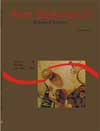<b>Allelopathy of Baccharis dracunculifolia DC. on the germination and development of cultivated species</b> - DOI: 10.4025/actascibiolsci.v30i3.3592
Abstract
Secondary metabolites produced in some plant species can provoke development changes in other plants or even in other organisms. The objective of this work was to identify the possible allelopathic effects of the aqueous extracts of Baccharis dracunculifolia leaves in the germination and growth of Brassica campestris, B. oleracea cv. Capitata, Citrullus lanatus, Eruca sativa, Lactuca sativa cv. Branca Boston, L. sativa cv. Grand Rapids, L. sativa cv. Simpson, Lycopersicum esculentum, Raphanus sativus and Zea mays seedlings. The aqueous extracts were made out of dried leaves at a 1g 10 mL-1 (p/v) concentration and by using seven of those aqueous extract concentrations (100, 90, 70, 50, 30, 10 and 0%), arranged into a completely randomized design, with five repetitions of ten seeds of each cultivated species. The aqueous extracts of B. dracunculifolia revealed allelopathic potentialities on the germination of the seeds and in the growth of the aerial part of the root system in all tested species and the reduction in the germination and in the initial growth increased with the increase of the concentrations of the used aqueous extracts. The results indicate the existence of allelopathic potential in B. dracunculifolia.Downloads
Download data is not yet available.
Published
2008-05-29
How to Cite
Gusman, G. S., Bittencourt, A. H. C., & Vestena, S. (2008). <b>Allelopathy of Baccharis dracunculifolia DC. on the germination and development of cultivated species</b> - DOI: 10.4025/actascibiolsci.v30i3.3592. Acta Scientiarum. Biological Sciences, 30(2), 119-125. https://doi.org/10.4025/actascibiolsci.v30i2.3592
Issue
Section
Botany
DECLARATION OF ORIGINALITY AND COPYRIGHTS
I Declare that current article is original and has not been submitted for publication, in part or in whole, to any other national or international journal.
The copyrights belong exclusively to the authors. Published content is licensed under Creative Commons Attribution 4.0 (CC BY 4.0) guidelines, which allows sharing (copy and distribution of the material in any medium or format) and adaptation (remix, transform, and build upon the material) for any purpose, even commercially, under the terms of attribution.
Read this link for further information on how to use CC BY 4.0 properly.
0.6
2019CiteScore
31st percentile
Powered by 

0.6
2019CiteScore
31st percentile
Powered by 











1.png)




3.png)













